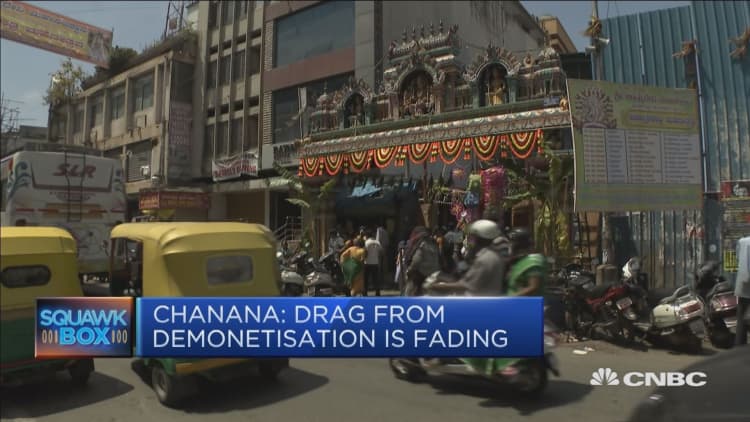India's surprise move to ban several bank notes last November — aimed at rooting out illicit cash — appeared to have achieved the opposite of its intended goal, according to a report from the country's central bank.
The Reserve Bank of India said in its annual report on Aug. 30 that 99 percent, or around 15.28 trillion rupees ($238.7 billion), of the demonetized 500- and 1,000-rupee notes were deposited or exchanged for new currency. That figure suggests that most people — including corrupt officials, businessmen and criminals said to have hoarded their illicit wealth in cash — have managed to preserve their fortunes.

Undeclared, untaxed and potentially criminal money in the economy was believed to largely exist in big bills, and so the scheme was designed to draw that cash out of the shadows. The thought process was that many bills would not be exchanged, as criminals refused to declare their funds, and so those enterprises would lose out. Instead, the plan appears to have only briefly inconvenienced holders of that so-called black money.
India's Finance Minister Arun Jaitley reportedly told a conference in New Delhi that illegal money had indeed found its way into the banking system, but said authorities are investigating 1.8 million bank accounts and 200 individuals to identify and tax that black money.
Opponents of Prime Minister Narendra Modi were quick to jump on the RBI's findings as proof that demonetization had failed. For one, former Finance Minister Palaniappan Chidambaram asked on Twitter if the whole effort had been a laundering scheme.
"Critics have presented this as overwhelming evidence that demonetisation failed in its stated aim of clamping down on illicit wealth, known colloquially as 'black money,'" Shilan Shah, India economist at Capital Economics, wrote in a Wednesday note.
"After all, the rationale was that demonetisation would penalise those storing illicit cash as they would be unable to declare it," he added.
A report by the Financial Times said complex money-laundering networks sprang up in Asia's third-largest economy after the demonetization scheme was announced. Wealthy individuals, attempting to evade tax authorities, sold the banned notes at a discount to brokers who dispatched low-income Indians to deposit or exchange them at banks.
Others turned to friends and relatives to help channel their undeclared cash into the banking system.
Has demonetization done more harm than good?
More than allowing illicit money to be laundered, India's demonetization exercise did not result in any direct fiscal benefit to the government, Nomura analysts wrote in a note last week.
The RBI's annual report showed its dividend paid to the government fell 53 percent to 307 billion rupees ($4.8 billion) in the last fiscal year, partly due to a sharp rise in expenditure as the central bank spent more on printing new notes to replace the banned ones.
"To recoup this will require additional belt tightening by the central government as it has already front-loaded some of its spending," the Nomura analysts said.

The economy was also affected by the shortage of cash. Growth slowed to 6.1 percent in the first quarter and moderated further to 5.7 percent in the subsequent three months, official statistics showed. Before demonetization, India registered a 7.5 percent expansion in the third quarter of 2016.
But not all is lost, analysts said. The move has had "secondary benefits" of encouraging higher due diligence, widening the tax base and boosting digital transactions, DBS economist Radhika Rao said.
Capital Economics' Shah added that the scheme appeared to be a political success for the Modi government.
"After all, the measures enabled PM Modi to demonstrate in a very visible way his commitment to fighting corruption and black money (even though they proved to be a failure). This helped the ruling BJP to secure major victories in state elections earlier this year," he wrote. "In turn, this has eased the passage of economic reforms."


